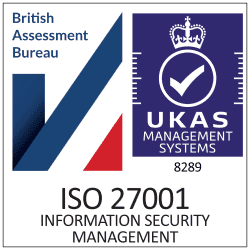

Looking for security intelligence to help you plan for 2026?
Hear directly from those working on the cyber front line, and gain the intel you need ahead of the new year.


Hear directly from those working on the cyber front line, and gain the intel you need ahead of the new year.

"Moving to E5 has been really good from a security point of view... Now we can get a holistic view of what’s going on, which helps us to make changes and recommendations for future plans."






Kickstart Your FastTrack Journey
Fill out the short form below to express your interest in our FastTrack programme, and we’ll be in touch soon.

“We needed to find solutions to a variety of issues whilst being a complex business, operating in a 24/7 environment. Stripe OLT listened and understood immediately the challenges we faced.”







“We needed to find solutions to a variety of issues whilst being a complex business, operating in a 24/7 environment. Stripe OLT listened and understood immediately the challenges we faced.”





Request a Call
First we need a few details.



















Stripe OLT were magnificent. When we discovered the flood we were very anxious about what it meant for our business, but Stripe OLT got us back up and running quickly, with the minimum of fuss.

Louise Gaynor – CEO








